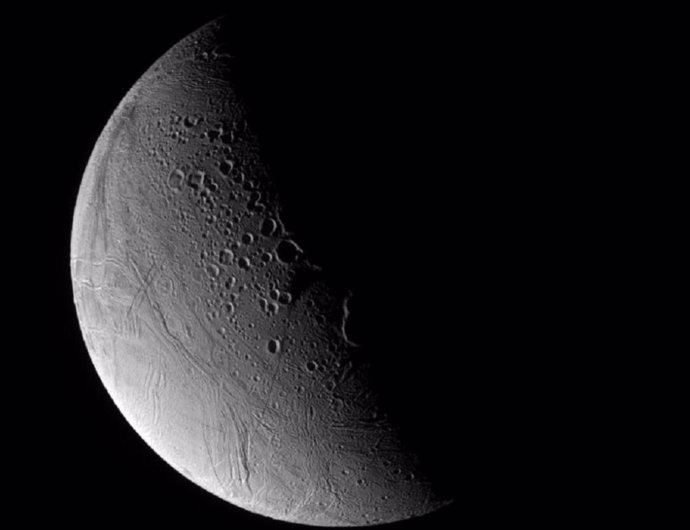Enceladus, Saturn’s icy moon, photographed from a distance of 141,000 kilometers by the Cassini space probe. – NASA, JPL | SPACE SCIENCE INSTITUTE
May 13. () –
An environmental simulation of an icy moon confirms that it is possible that the conditions that support or maintain life in extraterrestrial oceans leave molecular traces on ice grains.
In 2018very large organic molecules were discovered in ice particles on Saturn’s moon Enceladus, including some that are normally building blocks of biological compounds. It is not yet clear whether they indicate the existence of life or were created in some other way.
The data was recorded with a low-resolution measuring instrument from NASA’s now-completed Cassini mission. However, this could indicate that the ocean of Saturn’s moon Enceladus is full of organic molecules. “And that means that it is possible that chemical reactions are taking place there that could eventually lead to life,” he explains. it’s a statement Nozair Khawaja, first author of the new study as a researcher at FU Berlin and currently working at the University of Stutgart.
Researchers also suspect that there are hydrothermal fields located on the ocean floor of Enceladus. Until now it was not clear whether the organic molecules discovered were formed in these fields. Khawaja, along with his collaborators, has been looking for a way to answer this question and has published results in Philosophical Transactions of the Royal Society A: Mathematical, Physical and Engineering Sciences.
“To do this, we simulated the parameters of a possible hydrothermal field on Enceladus in the FU Berlin laboratory,” says Khawaja. “We then investigated what effects these conditions have on a single chain of amino acids.” Amino acids are the building blocks of proteins and the basis of all life as we know it.
In the test apparatus temperatures of 80 to 150 degrees Celsius reigned and a pressure of 80 to 100 bar, about a hundred times greater than on the Earth’s surface. Under these extreme conditions, the amino acid chains characteristically changed over time.
But is it possible to detect these changes with the measuring instruments of space probes? In other words, do they leave an unambiguous marker that we should be able to find in Cassini data (or future space missions)?
The measuring instrument aboard the Cassini space probe, the Cosmic Dust Analyzer, analyzes dust and ice particles from Enceladus in space that They travel at speeds of up to 20 kilometers per second. High-speed collisions between these particles cause the material to vaporize and the molecules it contains to break up. The fragments lose electrons and then become positively charged. They can be attracted to a negatively charged electrode and the lighter they are, the faster they will reach it.
It is possible to get the call “mass spectrum” measuring the transit time of all fragments. This can then be used to draw conclusions about the original molecule.
However, it is difficult to apply this measurement method in the laboratory. “Instead, we used for the first time an alternative measurement method called LILBID on ice particles containing hydrothermally altered material,” explains Khawaja.
“This provides mass spectra very similar to those of the Cassini instrument. We used it to measure a chain of amino acids before and after the experiment. In the process, we found characteristic signals that were caused by reactions in our simulated hydrothermal field“. The researchers will now repeat this experiment with other organic molecules under prolonged geophysical conditions in Enceladus’ ocean.
Their findings make it possible to search for such markers in Cassini data (or in data from future missions). If found, this would be further evidence.















![[Img #74662]](https://thelatestnews.world/wp-content/uploads/2024/12/Organisms-with-the-shortest-life-300x200.jpg)
Add Comment